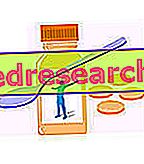Advertising found or a valid aid for our health?
There are now many people who have learned to recognize and fear the sadly famous hydrogenated fats contained in margarine and other foods of industrial origin. This particular type of fatty acids is in fact harmful to our health, since it tends to increase bad cholesterol, decreasing the good cholesterol and making the organism more susceptible to various diseases (especially of cardiovascular origin).

From 13/12/2014, thanks to the entry into force of the new European Commission regulation (1169/2011), even in Italy and in the other Member States it is no longer possible to use the simple generic word " vegetable fats ". In the labels of food products it is in fact obligatory to indicate the specific vegetable origin of the oils and, possibly, also the words "in variable proportion". Furthermore, if the oils or fats used are hydrogenated, it is mandatory to specify it on the label, adding the words " totally hydrogenated " or " partially hydrogenated " as appropriate.
Thanks to these impositions and to the bad reputation of hydrogenated fats, in the industrial field, where it is very important to enhance the quality of the products, we begin to formulate more and more products without totally or partially hydrogenated fats.
The first companies to take action were, of course, those that produce organic food, followed closely by supplement companies and those that focus a lot on the quality of their products.
Often this feature is clearly highlighted on the label, trying to convey to the consumer a clear example of the genuineness of the product.
This greater attention to the use of hydrogenated fats in the industrial field has therefore led to advertisements in which the use of NON hydrogenated vegetable fats is specified. Not least the campaign of the white mill that underlines this characteristic several times in its advertisements.
To understand what non-hydrogenated fatty acids are and if they are really harmless to our health, we must first understand how they are produced.
- Traditional hydrogenation is a process devised at the beginning of the twentieth century to make vegetable fats more solid and less perishable. This process takes place through the use of specific catalysts which subject the mixture of animal oils and fats to high temperatures and pressures to obtain chemically altered fatty acids. This process is particularly tempting for the food industries since it allows to obtain fats at a reduced cost and with the requisites suitable for their product (spreadability, compactness etc.). Furthermore, the storage time is considerably extended, a fundamental aspect also from an economic point of view.
Today the food industry is able to use alternative technologies to hydrogenation to obtain vegetable fats free of dangerous trans fats but with the same characteristics. The most popular methods are fractionation and intermolecular esterification.
- Fractionation is a physical process by which a vegetable oil is separated into different fractions characterized by a different degree of solubility. In this way it is possible to obtain a solid part, rich in saturated fatty acids, and a liquid part rich in monounsaturated and polyunsaturated lipids. The solid fraction is particularly resistant to oxidation and is used to produce margarine and vegetable fats in general.
- Interesterification is a chemical process that modifies the chemical structure of triglycerides by redistributing the fatty acids that compose them (transposition of fatty acids). The basic principle consists in the possibility of detaching a saturated fatty acid from a triglyceride and inserting it in another in place of a fatty acid; in this way the physical characteristics of an oil can be altered - for example by increasing the melting temperature, thus obtaining a semi-solid consistency at room temperature. This latter characteristic, in fact, depends not only on the fatty acid composition of a triglyceride but also on their distribution within the triglyceride itself. However, in order to obtain a semi-solid consistency it is still necessary to increase the percentage of saturated fats.
From the examination of these two production systems we understand how products containing non-hydrogenated vegetable fats are slightly better than those that use traditional vegetable fats.
In any case, these are products artificially handled, not natural and perhaps made from poor quality or already rancid oils. Furthermore, these foods still have a high content of saturated fatty acids, precisely because they are semi-solid at room temperature.
We can therefore compare non-hydrogenated fatty acids to green petrol and the respective catalyst; both substances are certainly less dangerous than in the past, but they are still far from being considered harmless or beneficial.
The term "partially hydrogenated" fats would seem more friendly than the classic term "hydrogenated fats", but in reality the two expressions are equivalent. So be careful not to be misled by fake advertisements.
Even the word "without cholesterol" is certainly misleading for the average consumer. It is simply products prepared using only vegetable oils or fats. This expression does not therefore give us any guarantee either on the presence of hydrogenated fatty acids or on the quality of the oils used for their production. Paradoxically, it could even be a more harmful food than the traditional ones, where animal fats have been replaced with hydrogenated vegetable fats, free of cholesterol but far more dangerous than the previous ones.



